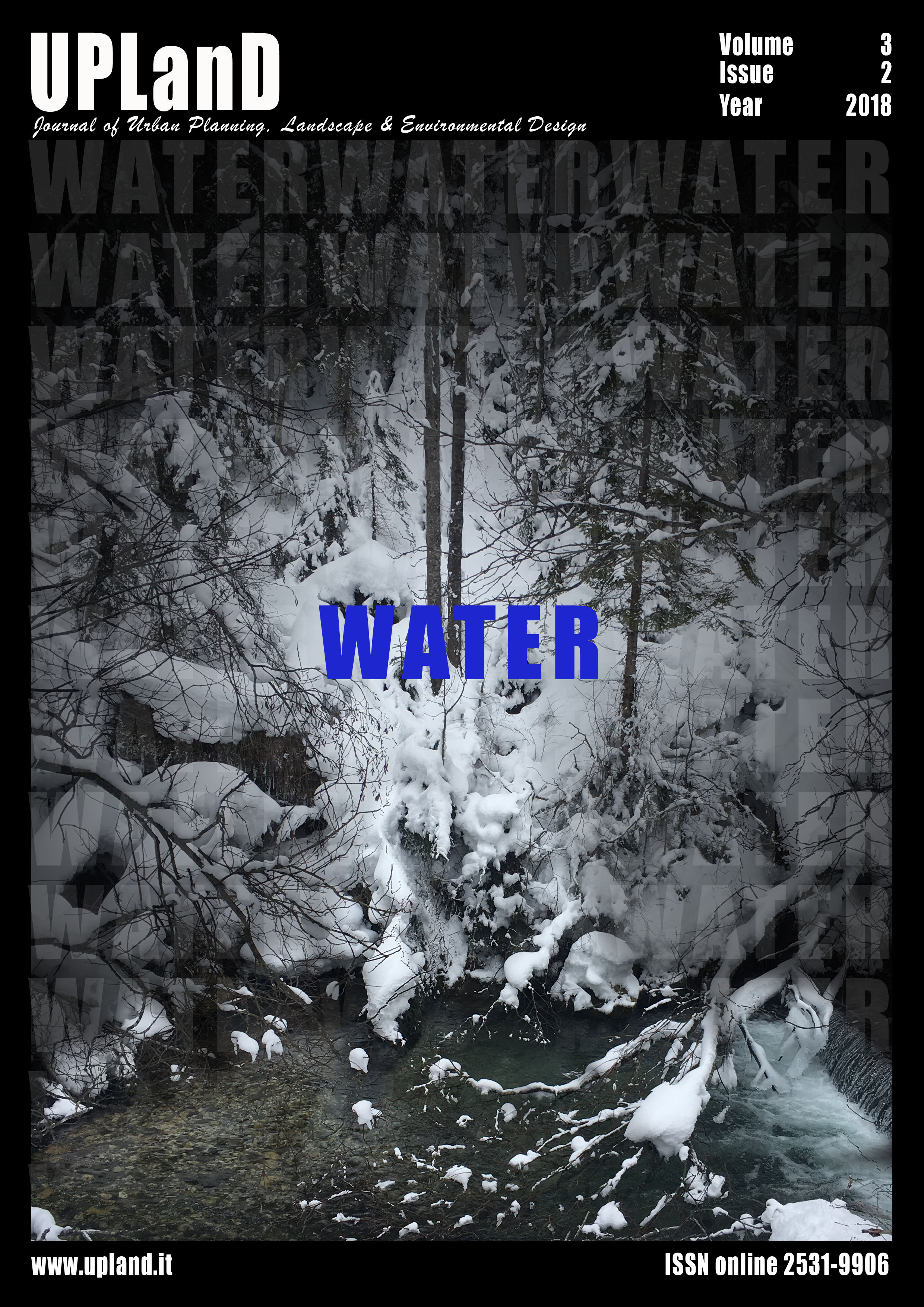Building the resilient city. Strategies and tools for the city masterplan
Main Article Content
Abstract
Urban risks and climate change mitigation and adaptation, are new challenges for enhancing the city resilience. City planning plays a fundamental role to cope with these challenges in new settlements design and urban renewal actions, taking into account the socio-ecological complexity of the city.
Catchment hydrologic response is influenced by several factors including land use choices and policy tools. Understanding potential effects of urban development is the basis for the implementation of storm‐water control planning actions, along with appropriate mitigation and compensatory measures at the catchment scale.
This paper presents a land use planning experience conducted by the University of Catania (Lapta Lab). The focus is on the role of municipal land use planning, a key element of the resilient city.
The settlement system of city of Avola, in Sicily, is illustrated as well as the natural characteristics of the site, relevant for the hydrologic response. The main steps of the planning process are described, in order to explain how urban resilience issues were practically addressed.
The case presented stimulate several considerations about water sensitive urban planning and the opportunities for the inclusion of nature based solutions, such as sustainable urban drainage systems and regulating services, in land-use planning processes.
Downloads
Article Details

This work is licensed under a Creative Commons Attribution-NonCommercial-NoDerivatives 4.0 International License.
Authors who publish with this journal agree to the following terms:- Authors retain copyright and grant the journal right of first publication with the work simultaneously licensed under a Creative Commons Attribution License that allows others to share the work with an acknowledgement of the work's authorship and initial publication in this journal.
- Authors are able to enter into separate, additional contractual arrangements for the non-exclusive distribution of the journal's published version of the work (e.g., post it to an institutional repository or publish it in a book), with an acknowledgement of its initial publication in this journal.
- Authors are permitted and encouraged to post their work online (e.g., in institutional repositories or on their website) prior to and during the submission process, as it can lead to productive exchanges, as well as earlier and greater citation of published work (See The Effect of Open Access).
References
Barbarossa, L., Martinico, F., & Privitera, R. (2017). Insediamenti irregolari e rischi territoriali lungo i litorali del Val di Noto. Percorsi di progetto per la città costiera resiliente. Atti della XIX Conferenza Nazionale SIU “Cambiamenti Responsabilità e strumenti per l’urbanistica al servizio del paese. Catania 16-18 giugno 2016. Roma – Milano, IT: Planum Publisher.
Bassan, L., & Pozzer, G. (2011), Vincolo di invarianza idraulica e pianificazione del territorio: prove di zonizzazione in provincia di Vicenza. In G. La Loggia, A. Paletti, G. Becciu, G. Freni, & U. Sanfilippo (Eds.), Acqua e Città 2011 - Pianificazione, Protezione e Gestione (pp. 75-76). Milano, IT: Centro Studi Idraulica Urbana
Chen, J., Theller, R., Gitau, M.W., Engel, B.A., & Harbor, J.M. (2017). Urbanization impacts on surface runoff of the contiguous United States. Journal of Environmental Management, 187, 470-481. doi: 10.1016/j.jenvman.2016.11.017
Desouza K.C., & Flanery T.H. (2013). Designing, planning and managing resilient cities: A conceptual framework. Cities, 35, 89-99. doi: 10.1016/j.cities.2013.06.003
EC, European Commission Staff (2012). Guidelines on best practice to limit, mitigate or compensate soil sealing. Working document for information purposes. SWD (2012) 101. Retrieved from http://ec.europa.eu/environment/soil/sealing_guidelines.htm
ISPRA (2017). Il Consumo di suolo in Italia, Rapporto 266/2017. Retrieved from http://www.isprambiente.gov.it/it/ispra-informa/area-stampa/dossier/consumo-di-suolo-2017
McPhearson, T., Andersson, E., Elmqvist, T., & Frantzeskaki, N. (2015). Resilience of and through urban ecosystem services. Ecosystem Services, 12, 152-156. doi: 10.1016/j.ecoser.2014.07.012
Kellagher, R., Martin, P., Jefferies, C., Bray, R., Shaffer, P., Wallingford, H. R., & Wallingford, H. R. (2007). The SuDS manual. London, UK: CIRIA C697.
Lennon, M., Scott, M., & O’Neill, E. (2014). Urban design and adapting to flood risk: the role of green infrastructure. Journal of Urban Design, 19(5), 745-758. doi: 10.1080/13574809.2014.944113
Martinico, F., La Rosa, D., & Privitera, R. (2014). Green oriented urban development for urban ecosystem services provision in a medium sized city in Southern Italy. iForest, 7(7). 385-395. doi: 10.3832/ifor1171-007
Meerow, S., Newell, J. P., & Stults, M. (2016). Defining urban resilience: A review. Landscape and Urban Planning,147, 38–49. doi: 10.1016/j.landurbplan.2015.11.011
Dipartimento Regionale dell’Ambiente-Assessorato del Territorio e dell’Ambiente (2008). PAI– Piano Stralcio di Bacino per l’Assetto Idrogeologico. available from www.sitr.regione.sicilia.it/pai/bacini.htm
Pappalardo, V., Campisano, A., Martinico, F., Modica, C., & Barbarossa, L. (2017). A hydraulic invariance-based methodology for the implementation of storm-water release restrictions in urban land use master plans. Hydrological Processes, 31(23), 4046-4055; doi: 10.1002/hyp.11318
Parikh, P., Taylor, M.A., Hoagland, T., Thurston, H., & Shuster, W. (2012). At the intersection of Hydrology, Economics and Low: Application of Market Mechanisms and Incentives to Reduce Stormwater Runoff. In H. Thurston (Ed.), Economic Incentives for Storm water Control (pp. 168-192). Bca Raton, US: CRC Press.
Walker, B., & Salt, D. (2006), Resilience Thinking: Sustaining Ecosystem and people in a changing world. Washington D.C., US: Island Press.

